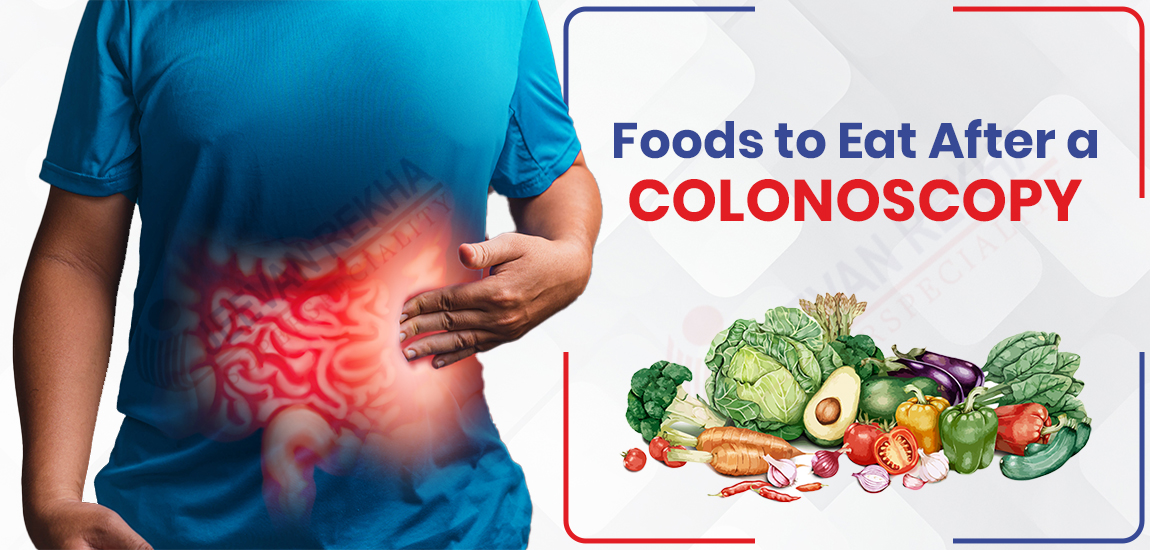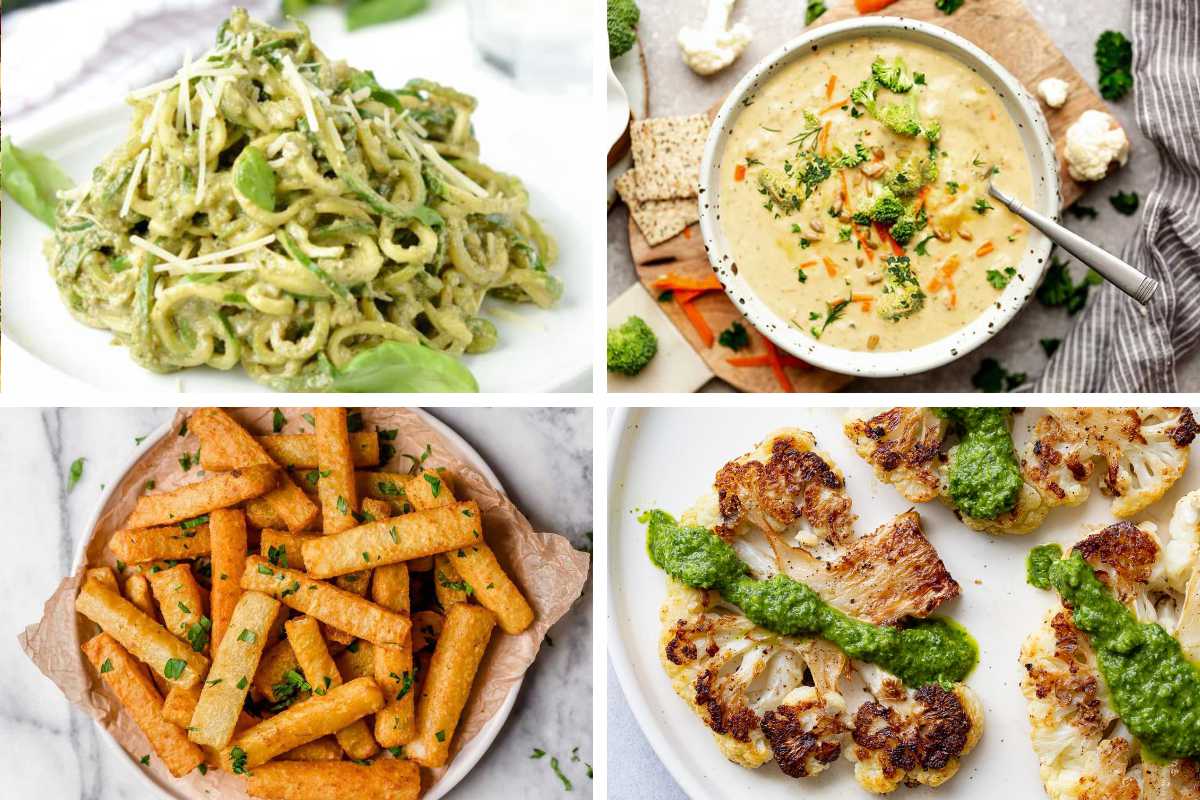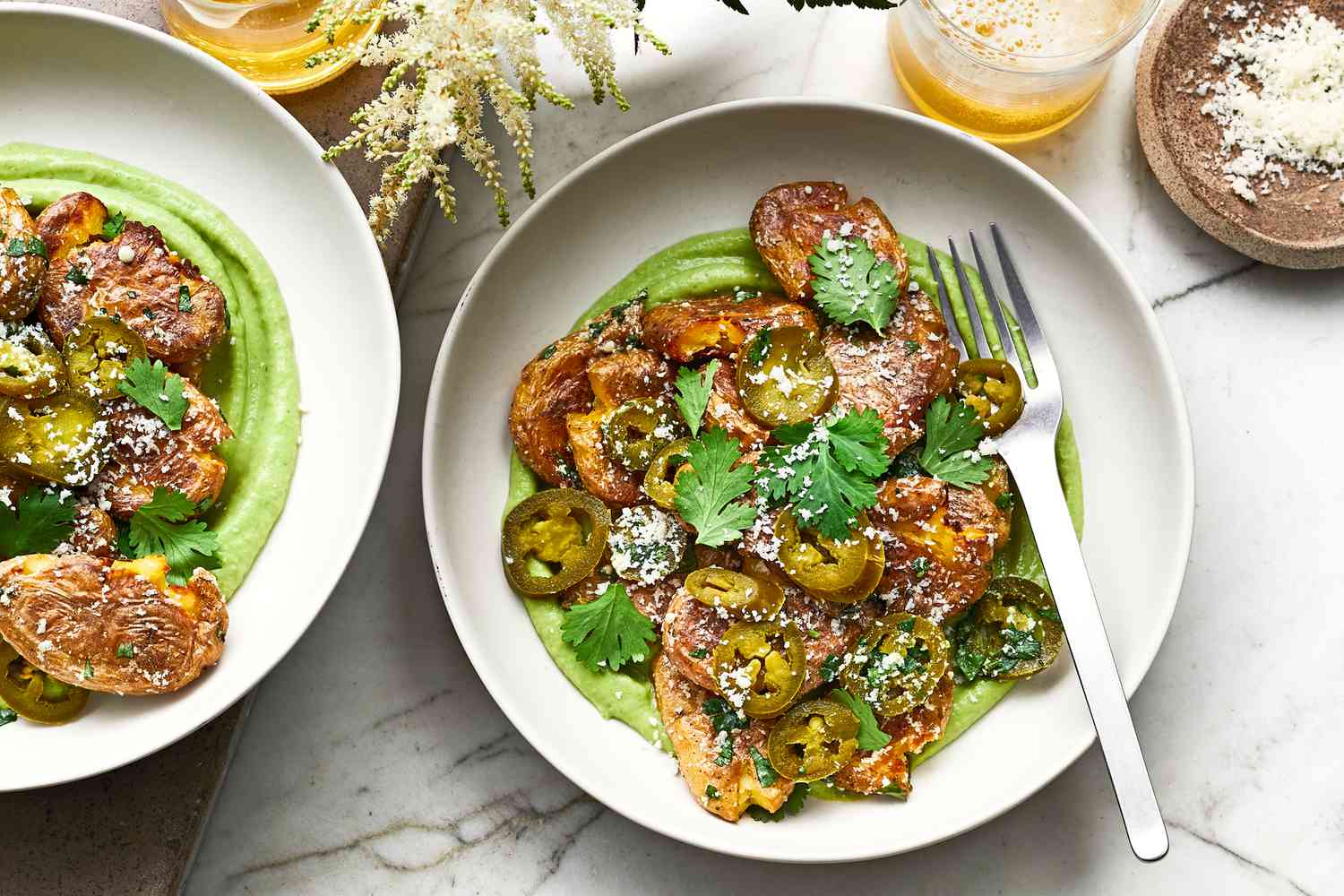Choose from 100K+ Trusted Recipes

Imagine discovering that what you put on your plate could be the secret weapon against colon polyps—those sneaky growths that lurk in your colon and raise the alarm for colon health. If you've been diagnosed with a colon polyp or are recovering from colon surgery, you're not alone. Millions grapple with these issues annually, but here's the empowering truth: "Can diet affect colon polyps?" Absolutely, and science backs it up. A strategic colon polyp diet plan isn't just about restriction; it's about fueling your body to shrink polyps, prevent recurrence, and support overall colon health. In this in-depth guide, we'll unpack everything from evidence-based foods that may help shrink colon polyps to "what foods to avoid if you have polyps" and "what not to eat after colon surgery." Drawing from expert insights, we'll craft a practical, delicious plan to reclaim your vitality. Whether you're preventing polyps or healing post-op, these tips could transform your gut game. Let's dive in—your healthier colon starts here. Can Diet Affect Colon Polyps? The Science Says Yes The question "can diet affect colon polyps" is a game-changer for anyone prioritizing colon health. Colon polyps are abnormal growths in the colon lining that can be benign but may turn cancerous if ignored. Research shows diet plays a pivotal role in their formation, growth, and even regression. High-fiber diets rich in fruits, vegetables, and whole grains are linked to lower polyp risk by promoting regular bowel movements and reducing inflammation. A study in the National Institutes of Health found that increased vegetable fiber intake correlates with fewer incident colon polyps, acting like a natural broom for the colon. Conversely, diets heavy in processed meats and sugars fuel inflammation and insulin resistance, potentially accelerating polyp development. Maintaining a healthy weight amplifies these effects—obesity is a known polyp promoter. Omega-3 fatty acids from fish and nuts may suppress inflammatory pathways, while calcium from dairy could bind carcinogens in the gut. Bottom line: Yes, diet profoundly affects colon polyps. By adopting a colon polyp diet plan focused on anti-inflammatory, nutrient-dense foods, you can tip the scales toward prevention and even shrinkage. It's not magic—it's microbiome magic, nurturing the good bacteria that guard your colon health. Crafting Your Colon Polyp Diet Plan: A Week-Long Blueprint for Success A solid colon polyp diet plan emphasizes balance: 25-30 grams of fiber daily, plenty of antioxidants, and limited processed fare. This isn't a fad—it's a sustainable shift for lifelong colon health. Start with whole foods, hydrate (aim for 8-10 glasses of water), and pair with exercise for max impact. Core Principles: Fiber First: Soluble fiber from oats and beans softens stool; insoluble from veggies adds bulk. Anti-Inflammatory Powerhouses: Turmeric, berries, and fatty fish combat polyp-promoting swelling. Portion Wisdom: Fill half your plate with veggies, a quarter with lean protein, and a quarter with grains. Tracking Tip: Use an app to log fiber intake and monitor how foods affect digestion. Here's a sample 7-day colon polyp diet plan, calibrated at ~2,000 calories for average adults (adjust as needed). It incorporates foods that may help shrink colon polyps while supporting post-surgery recovery. Day Breakfast Lunch Dinner Snacks Fiber (g) 1 Oatmeal with berries & walnuts (fiber boost) Quinoa salad with grilled chicken, spinach, & lemon dressing Baked salmon with steamed broccoli & brown rice Apple slices with almond butter 28 2 Greek yogurt parfait with chia seeds & kiwi Lentil soup with carrots & whole-grain roll Turkey stir-fry with bell peppers & zucchini Carrot sticks with hummus 30 3 Smoothie: Banana, spinach, flaxseeds, & almond milk Chickpea salad with tomatoes & cucumber Grilled tofu with asparagus & quinoa Handful of mixed nuts 27 4 Whole-grain toast with avocado & poached egg Tuna wrap in lettuce leaves with mixed greens Veggie stir-fry with shrimp & farro Pear & cheese stick 29 5 Chia pudding with mango & pumpkin seeds Black bean bowl with corn & salsa (mild) Baked cod with Brussels sprouts & sweet potato Yogurt with honey 31 6 Buckwheat pancakes with strawberries Kale salad with beets, feta, & vinaigrette Chicken kebabs with eggplant & couscous Celery with peanut butter 26 7 Overnight oats with apples & cinnamon Veggie burger on whole-wheat bun with side salad Lentil curry with cauliflower rice Orange segments 28 This plan draws from recommendations like those from the NIDDK, prioritizing fruits, veggies, and legumes to lower polyp odds. Pro tip: Introduce fiber gradually if post-surgery to avoid bloating—start low and build. Foods That Shrink Colon Polyps: Nature's Tiny Warriors Wondering about "foods that shrink colon polyps"? While no food is a miracle cure, certain powerhouses show promise in reducing size or preventing growth through anti-inflammatory and antioxidant effects. Focus on these for your colon polyp diet plan: Berries (Blueberries, Strawberries): Packed with ellagic acid, they neutralize free radicals that fuel polyp growth. Studies suggest daily intake may lower recurrence by 20%. Cruciferous Veggies (Broccoli, Cauliflower): Sulforaphane compounds detoxify carcinogens—eat steamed for easy digestion. Fatty Fish (Salmon, Mackerel): Omega-3s reduce colon inflammation; aim for twice weekly. Legumes (Beans, Lentils): High in folate and fiber, they bind toxins and support healthy cell turnover. Nuts & Seeds (Walnuts, Flaxseeds): Lignans here mimic estrogen blockers, potentially shrinking hormone-sensitive polyps. Whole Grains (Oats, Brown Rice): Beta-glucan fiber ferments into short-chain fatty acids that nourish colon cells. Incorporate these liberally— a handful of walnuts daily or a berry smoothie could be your polyp-shrinking ritual. For colon health, pair with vitamin D-rich foods like fortified yogurt to enhance absorption. What Foods to Avoid If You Have Polyps: Steer Clear of These Traps Knowledge is power, but avoidance is protection. "What foods to avoid if you have polyps" boils down to irritants that spike inflammation or slow transit, giving polyps free rein. Top offenders: Red & Processed Meats (Beef, Bacon, Hot Dogs): Nitrates and heme iron promote carcinogens—limit to once weekly or less. Fried & Fatty Foods (Chips, French Fries): Trans fats clog the gut and fuel oxidative stress. Sugary Treats (Soda, Candy, Pastries): They spike insulin, linked to polyp proliferation. Refined Grains (White Bread, Pastries): Low fiber means poor detox—swap for whole versions. Alcohol & Caffeine Excess: They dehydrate and irritate the lining; cap at one drink daily. Post-polypectomy, these can hinder healing. Opt for grilling over frying and herbal teas over soda for seamless colon health. What Not to Eat After Colon Surgery: Safeguard Your Recovery If you've undergone colon surgery (like polypectomy or resection), "what not to eat after colon surgery" is crucial for avoiding complications like leaks or blockages. Your gut needs TLC—start with clear liquids, progress slowly. Immediate no-gos (first 1-2 weeks): High-Fiber Raw Foods (Salads, Nuts): They bulk stool too fast—wait 4 weeks. Gas-Inducers (Beans, Carbonated Drinks, Broccoli Initially): Bloating strains incisions. Fatty/Greasy Items (Butter, Fried Chicken): Slow digestion, risking nausea. Spicy or Acidic (Hot Sauce, Citrus): Irritate the surgical site. Tough Textures (Popcorn, Seeds, Chewy Meats): Hard to pass through healing bowels. Dairy if Lactose-Intolerant: Opt for lactose-free until tolerated. Transition wisely: Soft-cooked veggies over raw, lean proteins over fatty. Hydrate and chew thoroughly—small meals every 3 hours prevent overload. By week 4, ease into the full colon polyp diet plan for sustained colon health. Long-Term Colon Health: Beyond the Plate A colon polyp diet plan is your foundation, but layer on habits: 150 minutes of weekly exercise, no smoking, and regular screenings. Stress management via yoga aids gut-brain harmony. In conclusion, embracing this colon polyp diet plan answers "can diet affect colon polyps" with a resounding yes—empowering you to shrink risks, avoid pitfalls, and heal robustly post-surgery. From berry-packed breakfasts to ditching processed meats, small swaps yield big wins for colon health. Consult your doctor for personalization, but start today: Your gut will thank you with renewed energy and peace of mind. Here's to a polyp-free, vibrant life!
News & Trending


:max_bytes(150000):strip_icc()/FAW-recipes-old-fashioned-strawberry-rhubarb-crisp-hero-03-881dbe96fec24c3f82130c73f5a287f3.jpg)



Popular Food Recipes
What would you like to cook?
Cook with us!
Scrumptious! Discover unique and interesting recipes at Recipechoose.com today with 5000+ recipes updated every week.
Vegetarian Recipes
Low-Carb Vegetarian Recipes: Delicious And Nutritious MealsThe low-carb diet has gained popularity for its effectiveness in promoting weight loss, maintaining stable blood sugar levels, and boosting overall health.

Food Recipes
Creative Vegetable Side Dishes: Elevating Everyday MealsVegetables are often seen as mere accompaniments to the main course, but with a little creativity, they can become the star of the show.
News & Trending

:strip_icc()/preparing-natural-food-for-pets-1137592020-52ac6351f68e499fb22594085222ca60.jpg)
:max_bytes(150000):strip_icc()/6236089-780238d875594b00871a5cbbd37a8a36.jpg)
:max_bytes(150000):strip_icc()/GettyImages-1166414538-76071e3fb15a4bed80ed64859ab1576e.jpg)

Gordon Ramsay’s Culinary Empire: Mastering The Art Of Beef Wellington
1. Gordon Ramsay: The Culinary Genius Behind the Magic Gordon Ramsay, an amazing chef and culinary expert, has redefined fine dining with his fiery passion and unmatched gourmet skills, earning his place among the top chefs of 2025. Born in 1966 in Johnstone, Scotland, Ramsay’s journey from humble beginnings to global stardom began with training under culinary titans like Marco Pierre White and Albert Roux, mastering classical French techniques with a bold, innovative edge. In 1998, he opened Restaurant Gordon Ramsay in London, which earned three Michelin stars, cementing his status as a top cook. His empire now spans over 30 restaurants, from Pétrus in London to Hell’s Kitchen in Las Vegas. Through shows like Hell’s Kitchen, MasterChef, and Kitchen Nightmares, Ramsay has inspired millions with practical best chef cooking tips, blending tough mentorship with accessibility. His cookbooks and philanthropy further share his gourmet skills, while his iconic Beef Wellington—a perfect balance of bold flavors, tender beef, and crisp pastry—captivates food lovers worldwide. This blog guides you through crafting this masterpiece at home with amazing chef recipes, bringing Michelin-star quality to your kitchen. 2. The Iconic Beef Wellington: A Culinary Masterpiece Beef Wellington, Ramsay’s signature dish, is a testament to his status as an amazing chef. This classic preparation, featuring a tender beef tenderloin wrapped in flaky puff pastry, showcases his technical prowess and bold flavor combinations. The dish layers a seared beef center with a savory mushroom duxelles, prosciutto, and buttery pastry, creating a symphony of textures and tastes. It’s a recipe that demands precision but rewards with an unforgettable dining experience. For home cooks eager to channel Ramsay’s gourmet skills, mastering this dish is a chance to bring Michelin-star magic to your table. Below, we outline the ingredients and steps, formatted for clarity and ease, drawing on Ramsay’s best chef cooking tips to ensure your Wellington is a triumph. 3. Ingredients for a Show-Stopping Beef Wellington To create a Beef Wellington worthy of Ramsay’s standards, start with top-quality ingredients. The following list, designed to serve four, ensures every component shines in this amazing chef recipe: 1.5-pound center-cut beef tenderloin (for tenderness and even cooking) 2 tablespoons olive oil (for searing) 1 pound cremini mushrooms (for the duxelles) 4 slices prosciutto (to wrap the beef) 1 tablespoon Dijon mustard (for a tangy kick) 14-ounce all-butter puff pastry (thawed if frozen, for a flaky crust) 2 egg yolks (for the egg wash) 1 tablespoon water (to mix with egg yolks) 2 tablespoons unsalted butter (for the duxelles) 2 shallots, minced (for flavor depth) 2 garlic cloves, minced (for aromatic richness) 1 sprig fresh thyme (for earthy notes) 1/4 cup dry white wine (to enhance the duxelles) Salt and pepper (to season throughout) These carefully chosen ingredients reflect Ramsay’s emphasis on quality, forming the foundation of a dish that’s as delicious as it is impressive. 4. Preparing the Beef and Duxelles The key to a perfect Beef Wellington lies in careful preparation, starting with the beef and duxelles, where Ramsay’s best chef cooking tips ensure a flavorful foundation. Follow these steps for success: Pat the beef tenderloin dry with paper towels to ensure a good sear. Season generously with salt and pepper to build flavor. Heat olive oil in a large skillet over high heat until it begins to smoke. Sear the beef for 1-2 minutes per side to develop a deep brown crust. Remove the beef, brush it with Dijon mustard while still warm to add a tangy layer, and set aside to cool, locking in juices for a tender result. For the duxelles, pulse the cremini mushrooms in a food processor until finely chopped, avoiding a puree texture. In the same skillet, melt butter over medium heat. Add minced shallots, garlic, and thyme, cooking until softened, about 3 minutes. Add the mushrooms, season with salt and pepper, and cook, stirring occasionally, for about 10 minutes until they release their moisture and form a thick paste. Pour in the white wine and cook until evaporated. Discard the thyme sprig and let the duxelles cool completely. These steps, rooted in Ramsay’s gourmet skills, create a robust base for the Wellington’s complex flavors. 5. Assembling the Wellington with Precision Assembly is where Ramsay’s gourmet skills shine, requiring focus to achieve the dish’s iconic appearance. Follow these steps to ensure a professional result: Lay a large sheet of plastic wrap on a clean surface. Arrange the prosciutto slices in a slightly overlapping layer to form a rectangle large enough to encase the beef. Spread the cooled duxelles evenly over the prosciutto, creating a thin, uniform layer. Place the seared beef tenderloin in the center. Use the plastic wrap to tightly roll the prosciutto and duxelles around the beef, forming a compact log. Twist the ends of the plastic wrap to secure and refrigerate for 20 minutes to set the shape. Roll out the puff pastry on a lightly floured surface to a 1/4-inch thick rectangle, large enough to wrap the beef. Unwrap the chilled beef and place it in the center of the pastry. Fold the pastry over, sealing the edges tightly and trimming any excess. Brush the pastry with an egg wash made from the egg yolks and water for a glossy finish. Lightly score the surface with a knife for an elegant presentation. This meticulous process reflects Ramsay’s status as a top cook, ensuring both flavor and visual appeal. 6. Cooking and Serving Your Michelin-Star Creation Cooking the Wellington to perfection is the final step in channeling Ramsay’s culinary expert flair. Follow these steps for a show-stopping dish: Preheat your oven to 400°F (200°C). Place the assembled Wellington on a parchment-lined baking sheet. Bake for 35-40 minutes, until the pastry is golden and crisp and the beef reaches an internal temperature of 135°F (57°C) for medium-rare. Let the Wellington rest for 10 minutes before slicing to allow the juices to settle, ensuring a moist and flavorful result. Slice into thick rounds and serve with roasted vegetables or a red wine sauce to complement its richness. The final dish, with its flaky pastry, savory duxelles, and perfectly cooked beef, is a testament to Ramsay’s genius, making it one of the ultimate amazing chef recipes. Serve it to impress guests or savor it as a personal triumph, channeling the flair of one of the top chefs of 2025. 7. Pro Tips for Ramsay-Level Perfection To elevate your Beef Wellington to Michelin-star quality, follow these best chef cooking tips: Keep the beef ice-cold before searing to achieve a caramelized crust. Use a screaming-hot skillet for the sear to lock in flavor. Chill the beef-and-duxelles log thoroughly before wrapping in pastry to maintain its shape. Work quickly with the puff pastry to keep it cold, ensuring a flaky texture. Wrap the finished Wellington in parchment for a minute after baking to slightly soften the pastry, mimicking the restaurant experience. For a healthier twist, consider using turkey bacon instead of prosciutto, though it may slightly alter the flavor. These tips, inspired by Ramsay’s gourmet skills, ensure your dish rivals his own creations. 8. Craving the Real Ramsay Experience? While recreating Beef Wellington at home is a rewarding challenge, nothing matches the experience of dining at one of Ramsay’s restaurants, where his culinary expert touch shines. If you’re near a city with a Ramsay venue, like London or Las Vegas, indulge in his menu for a true taste of his genius. But with the right ingredients and patience, your kitchen can become a stage for Ramsay’s magic, no reservation needed. This recipe lets you bring a piece of his legacy home, perfect for foodies seeking a Michelin-star challenge. 9. Final Bite Gordon Ramsay isn’t just a chef—he’s a culinary icon whose gourmet skills have reshaped fine dining. His Beef Wellington, with its complex layers and bold flavors, is a perfect example of why he’s an amazing chef. By mastering this dish, you’re stepping into the world of one of the top chefs of 2025, creating a meal that’s as impressive as it is delicious. So, skip the restaurant search and fire up your oven. Your Michelin-star moment awaits, ready to dazzle your table with Ramsay’s signature flair.
